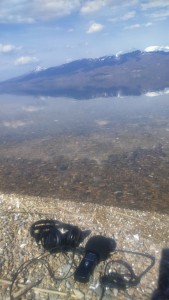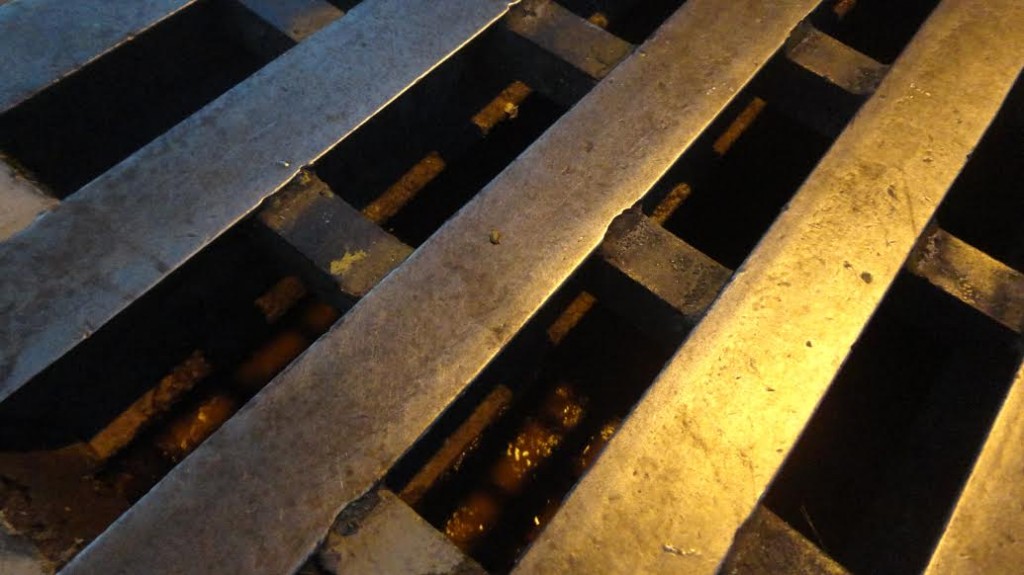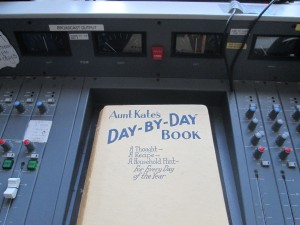
The guide of peripheral conversations in 26 lessons and 28 minutes is a method composed by Adeline Debatisse. This method is an audio and vocal alphabet book in 26 letters and 26 lessons in order to listen sound of others.
This vocal, musical and pedagogical method help you to explore what there are between our words and to listen peripheral tunes of our language. After listening, you will able to hear a lot of new features of oral language: the b-side parts of our talks: sound of our vibrations, their emotional intensity, their singularity.
NB: Watch out ! Every conversations and exercices use an authentic language, pronunce with a normal speed. You will have some understanding problems, especially at the begining. To get used to theses plural voices, you must perservere to continue to read between the lines. Every lesson is made up of vocabulary and conjugation exercices, we add some additional exercices of anatomy, singing and biology.
In order to learn all of the new vocabulary, do not hesitate to repeat aloud what you are listening in a second time. Do not forget, when you are practicing that you don’t have to find the good words, you just have to listen and pronunce the best as you can.
A special thanks to the plurals voices of this audioguide : Ed Williams and his «Assimil» tone of voice, students and friends who play this game of special interview : Chloé Cyril, Florent et Isalyne. Also, i’d like to thanks all the Radio Grenouille team for their trust and their support. And a special thanks to the electroacoustic composition class of Cite de la Musique in Marseille for their precious listening.
Thanks in advance to the audience of the radia sphere.
To listen again this methode, click here: https://soundcloud.com/la-perruque
Credits: Adeline Debatisse
////////////
Guide de conversations périphériques en 26 leçons
Le guide de conversations périphériques en 26 leçons et 28 minutes est une méthode d’apprentissage composée par Adeline Debatisse. Un abécédaire sonore et vocale en 26 lettres et 26 leçons pour écouter le bruit des autres. Cette méthode vocale, musicale et didactique vous permet d’explorer ce qui se trouve entre nos paroles et d’appréhender les mélodies périphériques de nos échanges.
Les exercices de dictions et de répétition que vous entendrez constituent un élément indispensable à l’écoute de toutes voix. Ils permettent d’étudier et d’entendre de nombreux aspects de la langue qui jalonnent nos respirations quotidiennes mais auxquels nous portons très peu d’attention, les à cotés et leurs vibrations sonores et affectives, les singularités de la voix.
NB : Attention tous les dialogues et exercices que vous allez entendre utilise une langue authentique prononcée à vitesse normale. Vous aurez sans doute des problèmes de compréhension, surtout au début. Il faudra persévérer car il faut absolument habituer votre oreille à ces voix plurielles pour continuer à lire entre les lignes.
Pour une exploration intégrale des périphéries vocales, chaque leçon est composée d’exercice de vocabulaire, d’orthographe, de conjugaison. Nous y avons ajouter des exercices complémentaires : d’anatomie vocale de chant et de biologie en fin de volume.
Afin d’assimiler l’ensemble du vocabulaire, n’hésitez pas à répéter à haute voix ce que vous entendez lors d’une seconde écoute. N’oubliez pas en faisant ces exercices qu’il ne suffit pas de trouver les mots qui conviennent, il faut à tout moment vous efforcez de prononcer le mieux possible.
Remerciements aux voix plurielles: Ed Williams et son tone of voice « assimil » aux apprenant(e)s et ami(e)s qui se sont prêté(e)s au jeu: Chloé, Cyril, Florent et Isalyne. Je tiens également à remercier l’ensemble de l’équipe de Radio Grenouille pour sa confiance et son accompagnement ainsi que les élèves de la classe de composition d’électroacoustisque de la Cité de la Musique de Marseille pour leurs écoutes précieuses.
Merci également à tous les écoutants et aux oreilles curieuses de la sphère radia.
Le Guide des conversations périphériques en 26 leçons est disponible à cette adresse pour une
réécoute. https://soundcloud.com/la-perruque
Crédits : Adeline Debatisse





